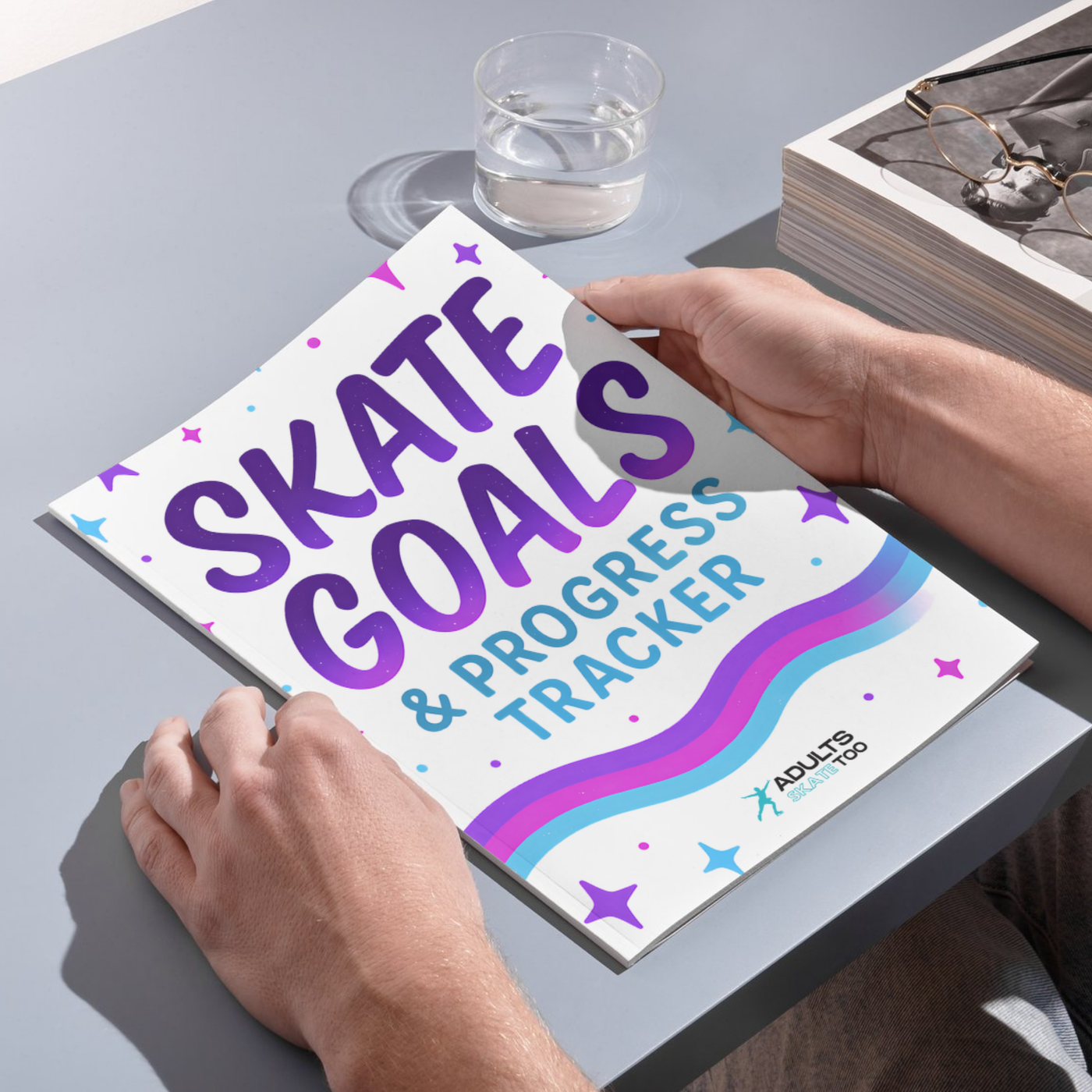Ice Skating Terms Explained (Like You’re Not at the Olympics)
If you’ve ever heard someone yell “that was a flutz!” across the rink and thought, “excuse me, a what now?” — this post is for you. Whether you’re new to skating, returning as an adult, or still trying to remember which edge you’re supposed to jump from, here’s a glossary of ice skating terms that makes sense (no judges’ panel required).
💡 The Basics
Toe Pick
The spiky teeth at the front of your blade. You’ll use these to launch jumps, grip during spins, and occasionally catch a rut and fall dramatically mid-crossover. A rite of passage.
Edges
Your blades have two sides: inside edge (closer to your body) and outside edge (facing away). Learning how to control your edges = becoming a real skater. Fake it ‘til your glide is silent.
Crossovers
That magical footwork where one skate crosses over the other. It's how you gain speed, look fancy, and stress-test your balance. Done forward or backward. Usually feels wrong before it feels right.
Fall
What happens when your body says "nope." As long as your butt, hands, or face hit the ice, the judges call it a fall. Around here, we call it progress.
⛸️ Jump Talk (aka Ice Acrobatics for the Slightly Unhinged)
Axel
The chaos jump. You take off going forward (the only jump that does that), rotate 1.5 times in the air for a single Axel, and land backwards. Every skater’s favorite trauma milestone.
Salchow / Loop / Toe Loop
These are your intro-level jumps. The Salchow takes off from an inside edge, the loop from a back outside edge, and the toe loop uses your toe pick to assist. You’ll love one and hate another. Probably both.
Flip / Lutz
Toe jumps with a twist. The flip takes off from the inside edge. The Lutz is the outside edge diva — except when it’s “flutzed,” which means you cheated the edge and someone’s gonna point it out.
Waltz Jump
The first jump you probably ever learned. Half a rotation. Still counts. Still majestic.
✨ Spins, Because Turning in Circles Is a Sport
Scratch Spin
Upright spin that starts slow and speeds up like you’re a human Beyblade. Arms in, legs crossed — the faster you pull in, the more it feels like a carnival ride.
Camel Spin
Spin with one leg extended behind you, kind of like an airplane. Requires core strength and some delulu energy.
Sit Spin
Basically a spin in a squat. Quads = burning. Audience = impressed. Knees = questionable.
Biellmann Spin
That extreme back-bendy one where you pull your leg up over your head while spinning. Most often seen in flexible queens. (Shoutout to Yuzuru Hanyu.)
🎭 Program Stuff (aka Skating Vibes + Score Math)
Free Skate vs. Short Program
Free skate = longer, more expressive routine with lots of jumps. Short program = a faster routine with required elements. Both will expose how out of shape you are.
Transitions
The moves between jumps and spins — like steps, turns, or twizzles — that make your program look seamless (or chaotic, depending on how awake you are).
Choreographic Sequence
That part where you get to show off. Spirals, Ina Bauers, hydroblading — whatever makes your coach cry (in a good way).
Program Components
Skating Skills, Performance, Transitions, Composition, Interpretation. Also known as: the artistic side of things that gets judged even if you land all your jumps.
🎯 Judging, Scoring, and All That Nonsense
Base Value
Every element has a base score based on how hard it is. A triple Axel has a high base value. A waltz jump… not so much. Still iconic, though.
GOE (Grade of Execution)
The +5 to -5 score each judge gives based on how well you executed a move. Did you land it clean? Bonus points. Did you fall on your face? Negative town.
Total Element Score (TES)
The sum of all your jump/spin/lift points. Think of it as the technical side of your scorecard.
Program Components Score (PCS)
Your artsy-fartsy score. Judges decide how beautiful, musical, and “connected to the music” you are. You can literally feel this one go up if you make eye contact mid-spiral.
🏁 Bonus: Cool Terms to Know So You Sound Legit
- Toe Jump: Uses the toe pick to help take off (like the flip, Lutz, or toe loop).
- Edge Jump: No toe pick — just edge magic. Think Salchow, loop, Axel.
- Twizzle: A turn on one foot that rotates fast. Ice dancers love this one. Looks easy. Is not.
- Step Sequence: Choreo on ice. Fast footwork, patterns, musicality — think of it as a dance break but colder.
- Throw Jump: In pairs skating, one partner yeets the other into the air. Casual.
- Lift: Pairs element where one skater (usually the guy) lifts the other. Requires strength and trust. Or adrenaline.
💙 Want to Learn These Terms *While Actually Skating*?
We made a Skate Goals & Progress Tracker just for adult skaters like you — whether you’re mastering toe loops or just trying to journal your public session rage.
It’s digital, printable, and includes spots to log your jumps, spins, moods, and meltdowns. Check it out here →
Got a skating term you want us to explain next? Slide into our DMs or comment in the AST group. We gotchu.





